The year was 2006.
The scene was something out of a horror film.
The place was a Seattle, Washington neighborhood. A collection of monsters wandered through the neighborhood, seemingly without purpose or destination. Of course, they weren’t really monsters. They were regular humans wearing an assortment of masks, wandering through the streets and the campus of the University of Washington. Some wore caveman masks; others wore masks that resembled Vice President Dick Cheney. But this was not a political rally. Thankfully, it wasn’t an attempted crime either.
The masked individuals casually walked through Seattle. The scene was a combination of comical and eerie. But there was a purpose behind the strange behavior. Eventually, some of the masked people—the ones wearing the caveman masks—approached and captured some of the native crows. They also took a close inspection at the crow nests. But then, without taking anything or leaving anything behind, the masked menaces released the crows, left the nests, and disappeared. Only when they were out of sight of the crows did the masks come off. The researchers then recorded their data and went home.
The views expressed in this article reflect those of the author mentioned, and not necessarily those of New Creation.
A Moral Obligation
In the wake of the International Conference on Creationism (ICC), it is clear that creationists are making great progress in collaboration, research, and discovery of biblically sound scientific models. Young-earth creationism as a model continues to grow in explanatory power and overall coherency. At ICC, however, there was a subtle but significant lack of research concerning hot topics from the mainstream scientific realm. There is—or at least, should be—plenty of overlap in what secular scientists and creationists study. True, both parties possess different approaches to hominid fossils, climate change, geology, population genetics, and a host of other questions. But just as creationists debate about certain topics (feathered dinosaurs and the Flood boundary being particularly prominent), secular scientific circles also have topics they debate among themselves.
But here’s the catch. Creationists debate issues that are relevant to the age of the earth, the created kinds of Genesis, and the Flood. These are topics of which mainstream scientists have no interest and little knowledge. But the “big issues” in mainstream scientific circles tend to be deeply relevant to creationism. Some examples are genetic engineering, de-extinction, and human cloning. Christians should be heavily involved in these topics, since they are moral issues of bioethics. They apply to humanity, the dominion of man, and God. An atheist contemplating the ethics of altering the human genome would approach the issue very differently than a theist. It is, therefore, a moral obligation for Christians to heavily involve themselves in these moral dilemmas, so we can pursue the will of God.
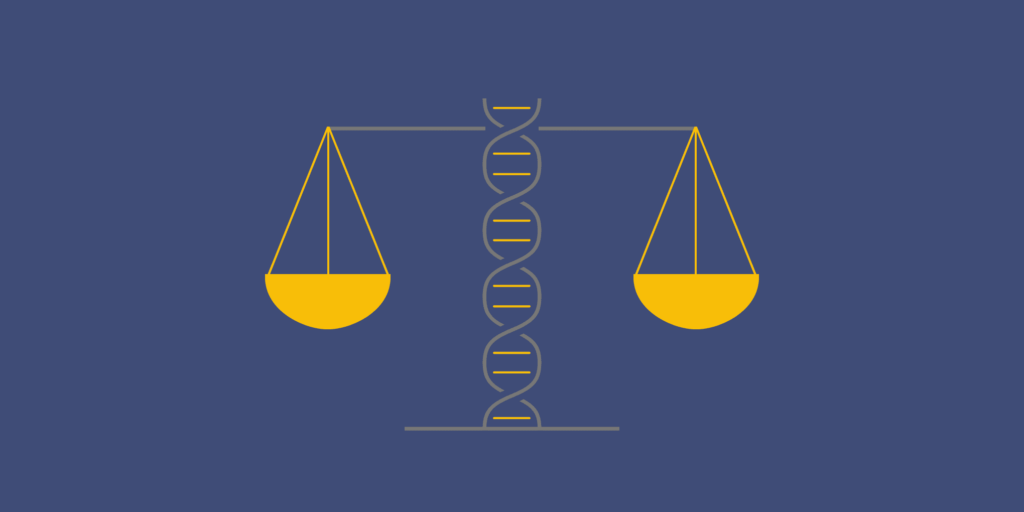
An Intellectual Despoiling
Wide-ranging issues in bioethics are not the only areas in which creationists should get involved. Many controversies in mainstream scientific circles, if solved, would contribute nicely to the young-earth creationism model. In fact, recent controversies in young-earth creationism circles were once the discoveries and discussions of secular scientists. For example, the number of human species there are and whether some dinosaurs had feathers. The idea here is that all truth —whether it is discovered by atheists, Christians, or people of other faiths— is still God’s truth. And so, Christians can, and should, utilize the data collected by secular scientists. They should take mainstream scientific debates and place them under a biblical lens. In this way, we can build alternative models when the prevailing secular theories contradict the Bible.
St. Augustine believed that “whatever has been rightly said by the heathen, we must appropriate to our uses.” Like the Israelites plundered the Egyptians of physical wealth before the Exodus (and used that pagan gold to serve their Lord), so too, says Augustine, can Christians take the wealth of information collected by unbelievers and “devote [it] to their proper use in preaching the gospel.” Of course, creationists are quick to do this when scientific discoveries directly impact the core tenants of the creation model. But more distant issues have passed us by, despite their relevance to science, Scripture, and what it means to be human.
One such issue is animal culture.
The Animal Culture Debate
For thousands of years, social learning in animals has been an interesting topic among humans. More recently—within the last 150 years—that topic has accumulated into a large-scale debate among biologists, anthropologists, and psychologists. That debate centers around the idea of culture, and whether it is strictly a human attribute.
Over the past century, researchers have presented plenty of evidence suggesting that culture exists elsewhere in the animal kingdom. Experts from various fields have supported, debated, and challenged this evidence. Despite the stir this topic has made among scientists, Christians in the academic sphere have been silent on the issue. Christian academics and theologians have thoroughly addressed animal rights, ethics, and mankind’s relationship with animals. But they have yet to offer a definitive stance on the topic of animal culture.
The scientific world approaches this topic by postulating about what the available evidence implies. The Christian approach, however, should begin with what the Scripture has to say about the nature of animals. Does the Scripture address animal culture? How does the animal culture debate affect how humans are different from the animal kingdom? Does the scientific evidence for animal culture clash with the biblical understanding of the dominion of man or the image of God? The answers to these questions will form the foundation for a biblical understanding of animal culture.
What is Culture?
The animal culture debate impacts how Christians interpret Scripture because it extends a quality to the lower animals that we historically thought uniquely human. Therefore, animal culture impacts how we understand the image of God, the Dominion Mandate, and man’s relationship with the animals. But in order to know whether the evidence for animal culture clashes with the biblical perspective, we must define our terms. It is pointless to argue about animal culture without an agreed upon definition of “culture”.

When people think about human culture, they almost inevitably conjure up images of paintings, orchestras, operas, and other arts. They might think of music, literature, movies, and other forms of pop culture. While they are all part of human culture, these examples do not complete the definition. Pop culture and “the arts” are examples of high culture, which we can define as religious, poetic, and artistic activity. Scientists and anthropologists generally consider this a subset of culture, and they agree that it is strictly a human attribute.
The definition of culture is trickier, and some anthropologists define it using the term “mankind” or “human”. This obviously excludes the animal kingdom from the start. But culture may actually be simpler than people think. Two advocates of animal culture, renowned whale expert Hal Whitehead and his colleague Luke Rendell, provide this simple definition in their 2015 book The Cultural Lives of Whales and Dolphins:
Social learning, as the term implies, is when one individual passes behavior or information to another. Only when this transmission of information spreads to an entire community does it become culture. This straightforward definition encompasses the “high culture” of human societies, and the simpler, more fundamental types of culture as well. It is, however, a narrow and purely scientific definition. Though Hal Whitehead and Luke Rendell used an abundant variety of cited works to come up with this definition, we must not forget that many experts do not see culture this way. I selected this definition because it elegantly explains exactly what advocates of animal culture are proposing, whether people agree with this definition or not.
Over the years, scientists have proposed that animal communities can and have exhibited simple forms of culture.
History of the Animal Culture Debate
Social learning is the first part of culture, and it has been observed in nature for thousands of years. Aristotle noted that birdsong is mostly a learned trait. Charles Darwin and Russel Wallace, the independent discoverers of natural selection, both observed social learning in animals. As a result, many scientists of the 19th and early 20th centuries believed in learned traits in animals. Following another monumental discovery—that of the genome and DNA—scientists focused heavily on genetic traits. Learned behaviors were forgotten as the new study of genetics took over the scientific world.
Once the genetic revolution calmed down a bit, the culture conversation resurfaced. This time, it became a large-scale debate rather than an occasionally described phenomena. Many scientists believe that genetics, instinct, and external circumstances can better explain animal behavior. Animal culture advocates, on the other hand, credit social learning as a factor. This debate is still active today.
Evidence of Animal Culture

In the mainstream establishment, the animal culture debate begins and ends with the evidence. The evidence began with early ethology (the study of animal behavior). Konrad Lorenz and Niko Timbergen, the “founders of ethology,” claimed that culture impacted animal behavior in some cases where the animal is considered a social species (it live in groups). The two experts cited birdsong as a prime example. It was a social species of bird—the blue tit—that learned how to open sealed milk bottles in 1950s Britain. Social learning seems to be the best explanation for how that behavior spread throughout the population (some robins figured it out too, but since robins are not a social species, the behavior remained isolated).
Around this time, Japanese scientists noticed primate species learning foraging techniques from one another. In 1999, Science published an article suggesting that 39 behavioral habits in chimpanzees are culturally learned. The chief author, Andrew Whiten, observed that these behaviors develop in some chimpanzee communities but not in others. He also discounted other ecological factors that might explain the phenomena (Whiten et al. 1999).
Cetacean Culture
A new group of animals entered the debate in 2001, when Hal Whitehead and Luke Rendell published an article about culture in whales and dolphins. The academic pushback to their research was so strong that in the same year, the two published another article with the tongue-in-cheek title “Cetacean culture: Still afloat after the first naval engagement of the culture wars.” In these articles, Whitehead and Rendell suggest that certain behaviors are socially learned and even cultural. While they focus primarily on whale songs being culturally learned, another interesting example involves wild dolphins performing tricks they learned from dolphins that were raised in captivity. The two scientists defended their conclusions in a 2015 book, “The Cultural Lives of Whales and Dolphins.”
The cetacean culture advocates seem to be on the right track. Within the last few years, orcas have begun attacking boats in the Strait of Gibraltar. Many boats have even been sunk by the killer whales, requiring emergency rescues. The pictures, testimonies, and videos taken by witnesses allowed scientists to publish a study about why this behavior is growing in orca populations.

The leading theory involves one orca, nicknamed “White Gladis,” teaching other orcas to attack boats and how to do it (the secret: aim for the rudder). It is thought that White Gladis began attacking boats after suffering a collision with one. Other orcas directly imitated her retaliation. The “learned behavior” is even spreading throughout the subpopulation. One news article describing the 2022 study says, “the observed behavior has spread among the younger orcas vertically through imitation and later horizontally among their peers.” Attacks from mercenary orcas have increased among killer whale populations via social learning, continuing to endanger boats today.
It appears that the evidence for animal culture is mounting. But before we jump on board, it is important to determine whether the idea is biblically sound. If it is not, then Christians can expect other ecological factors to emerge explaining these natural occurrences.
Is Culture a component of the Imago Dei?
What separates man from the animals? In Genesis, we read that God created man in the image of God, a concept often referred to using the Latin term Imago Dei. God also gave humans dominion over all of creation, which theologians call the Dominion Mandate. Are either of these contradictory to animal culture? Out of these two distinctions, clearly only the Imago Dei has the potential to be at odds with animal culture, since dominion is a role that humans must fulfill, not a quality that only humans have. With that distinction out of the way, the next question that we must ask is one that theologians have wrestled with for millennia: what is the image of God?
Of course, we cannot adequately answer this question here, but what we can do is evaluate current interpretations of the Imago Dei and see if any of them rule out the possibility of animal culture. Then we can evaluate these views on their own merit. Popular stances on the ongoing Imago Dei discussion include the Substantalist view, the Vocational view, the Relational view, and the attributes of God view.
The Substantialist View

The Substantialist position equates the Imago Dei with reason or rationality. It has historical roots in the philosophies of Plato, who believed reason was man’s greatest quality, and Aristotle, who defined man as the rational animal. According to its modern proponents, the Imago Dei was endowed to humans exclusively at Creation. While this view would directly contradict the evolution model (specifically, Darwin’s claim that the cognitive differences between man and animal was only of degree and not of kind), there is nothing in this view that denies animal culture. Paul Sands’ description of this view leaves no doubt about this: “When identified with the imago, ‘reason’ is understood broadly and includes such notions as self-consciousness, moral sense, freedom, self-transcendence, and ‘spirituality’.” Since social learning is not dependent on spirituality and morality, the Substantialist view leaves open the possibility of animal culture.
The Vocational View
The Vocational view is popular among theistic evolutionists, including those at Biologos. This view equates the Imago Dei with the Dominion Mandate. Essentially, the Image of God is the role or calling that God tasked humans with: to care for and rule over the earth as God’s “representative rulers” until Christ comes to redeem his Creation. Followers of this view are sometimes accused of being influenced by evolutionary assumptions and incorrectly equating the Imago Dei with function rather than being. This latter critique is certainly true; the vocational view openly suggests that the Imago Dei is not a quality humans were designed with but rather a functional role they were designed for. This is a problem for many Christians who believe God created Adam and Eve as “image bearers” who are embodied with inherent characteristics that animals do not share.
Attributes of God
Meanwhile, a view popular among young-earth creationists (such as Answers in Genesis) is the attributes of God interpretation. This view holds that the Imago Dei refers to qualities that are part of God’s character; qualities He created mankind to reflect, such as love, grace, mercy, and self-awareness. Humans share these attributes imperfectly (distorted by sin and the Fall), but they are still present in man (though absent in animals). The strength of this view is that it explains the human experience—namely, why humans have love, grace, and other attributes—and further, why humans struggle to live out those attributes perfectly. In other words, the attributes of God view fits into the overall narrative of the Bible, and presents Jesus Christ in a new light: as the only perfect Image Bearer.
While the Vocational and attributes of God views are both used to support different interpretations of Genesis, it should be clear that neither of these positions is in conflict with animal culture. Culture is not intrinsically related to the Dominion Mandate nor is it an attribute of God, since the Trinity does not relate to one another via social learning.
The Relational View

Finally, the Relational view, as proposed by Karl Barth, defines the Imago Dei as “social relatedness.” Just as God is eternally relational (as opposed to being a “solitary individual”), image bearers “reflect the divine image not as solitary individuals but in social relatedness” (Barth, 34). This interpretation stems from biblical concepts such as the Trinity (God as a relational Being to Himself), the use of the plural in Genesis 1:26 (“let us make man…”), and the sexual differences among humans (man and woman as relational beings).
Already, without a doubt, it should be evident that there are some inconsistencies between the Relational view and the idea of animal culture. If the Image of God describes an ability to socially relate to other beings, then animals do not have the ability to socially relate information or behavior to one another. Yet this is exactly what animal culture requires, and therein lies a contradiction.
A Call to Action
Of course, a biblical view of the animal culture debate does not depend on every interpretation of the Imago Dei. It is only dependent on which interpretation is the correct one. Maybe none of these four views are exactly what God meant in Genesis. It could be a combination of two or three or all four of these views. When constructing a biblical view of scientific research, it is here we must look to the young-earth theologians, who (understandably) have yet to come to a definitive consensus on what the Imago Dei is. Hopefully this article demonstrates how important this theological issue is to our views on mankind, the animal kingdom, and man’s place in nature. Creationists must seek a firm understanding of the image of God in order to evaluate scientific debates about humanity’s relationship to the rest of nature.
A (tentative) Verdict
This article cannot determine the correct interpretation of the image of God. It can, however, evaluate each of these four interpretations in light of the animal culture debate. Out of these four common views of the Image of God, only one contradicts the notion of animal culture. The Relational view suggests that only humans can relate to each other, whereas animals, by default, are driven by instinct, genetics, and whatever else scientists can determine is a driving factor for behavior.
Significantly, the Relational view may be somewhat outdated. Paul Sands points out that many theologians have settled on different exegetical interpretations of those critical verses that the Relational view is built on. For instance, the “Let us” in Genesis 1:26 is interpreted by many theologians as a “plural of deliberation” rather than a reference to the trinitarian relationship of God. If so, the phrase would emphasize that the act of creating man was intentional and important, rather than having anything to do with God as a relational Being. Also, theologians such as Robert Alter and J. Richard Middleton have challenged the idea that the sexual differences between male and female are social distinctions, instead suggesting that Genesis 1:27 is a biological separation of the sexes. Both of these arguments seem to deny that Genesis 1:26-27 placed any emphasis on God or man as relational beings.
The Vocational view, even when separated from its evolutionary assumptions, seems to be the weakest of the remaining three. It equates two terms (the Image of God and the Dominion of Man) that have distinct definitions in Scripture. This leaves the Substantialist view and attributes of God view. Both of these are popular interpretations among young-earth creationists and evangelical Christians. Regardless of where one aligns, it should be obvious that neither of these views describe culture as an explicitly human characteristic.
Conclusion
The existence of animal culture is somewhat dependent on one’s interpretation of the image of God in Genesis 1. Interpreting the image of God is a complicated theological discussion, further muddled by Genesis 5:3, which records that Adam’s children—and everyone born thereafter— were born in the image and likeness of Adam. All of the evidence of the Image of God in humans is thus corrupted by the Fall, to be restored again at the return of Christ, who is himself God’s image.
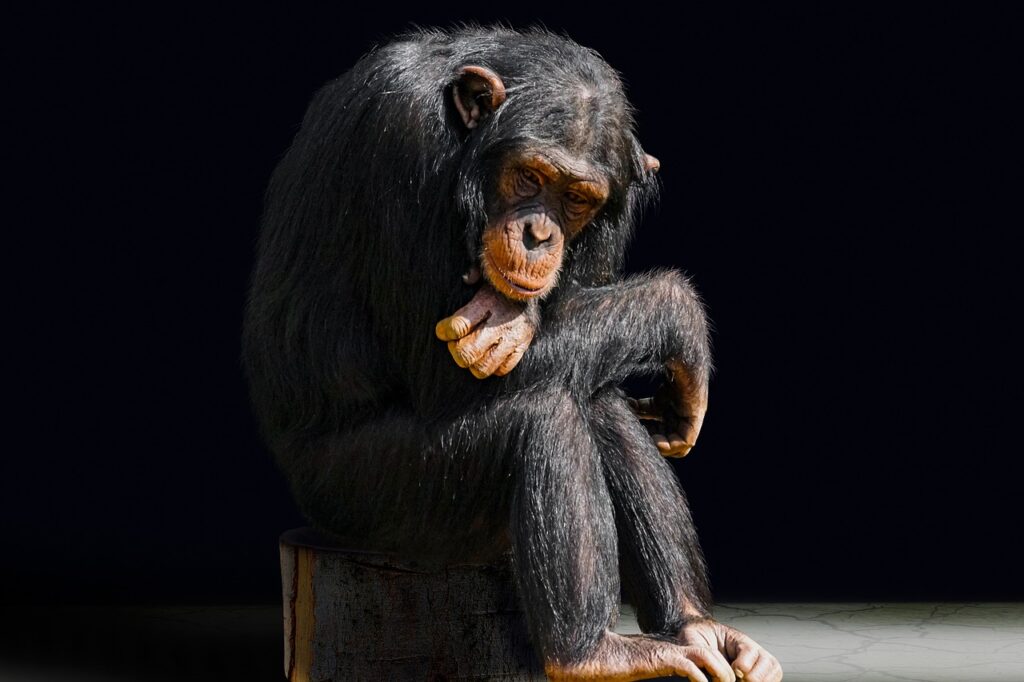
Another option that will inevitably come to mind is that several of these views touch on part of what the Imago Dei is. Many Christians recognize the many ways in which humans are special, and they view this self-evident distinction as the image of God. Others may argue that the Image of God is none of these four interpretations, or that the Imago Dei is metaphysical by nature and cannot be explained by human theories or models.
Despite the complexity of the debate, it is clear that most of the leading interpretations of the Imago Dei are compatible with animal culture (as defined by the animal culture advocates*). This means that creationists have no reason to fear the debate. Further, Christians do not need to challenge the evidence for animal culture on the basis of Scripture. Animal culture is not a denial of mankind’s uniqueness or special creation. It is not an evolutionary idea or an attack on the biblical dominion of man. It might just be another fascinating part of God’s wonderful creation that we get to discover, learn, and pass on to others.
The year is 2015.
Nine years after the mask experiment, the Seattle neighborhood is a bit different. The faces at the University of Washington are mostly unfamiliar. Yet the streets, roads, and landscape of the area are largely the same.
Then, out of the blue, the monsters returned. The caveman masks and Dick Cheney masks were back, walking the same paths they walked years ago. But there was one notable difference in how they acted. This time, no one approached the local corvids. Even if they wanted to repeat the experiment from nine years ago, they would have had a difficult time approaching the birds. Because the birds would not let them get anywhere close.
The crows, including individuals born after the last exhibition, squawked and screamed at the caveman masks. They harassed the researchers, singling them out from among the crowd of passersby (including the “safe” Dick Cheney masks). Further, when the masked researchers traveled beyond the area of study, they were squawked at and pestered by crows of all ages as far as half a mile from the area of the previous experiment. The crows had spread the word both vertically to their offspring and horizontally to their neighbors about the dangers of the masked fiends. As a result, the cavemen were not welcome.
It appears that birds of a feather do flock together. And they never forget a face.
Notes
*It is important to recognize that the definition used here is the one proposed by only one side of the debate. Some critics of animal culture agree that social learning can spread throughout a community of animals, but they reject the idea that this is culture. For example, some scientists believe culture must be passed down through generations, which is not observed in many cases presented above. Still others agree with the definition but argue that other environmental factors better explain animal behavior.
Footnotes
Ackerman, Jennifer. The Genius of Birds. Penguin Books, New York. 2016.
Augustine. De Doctrina Christiana 2.40. Public Domain.
Gurney, Robert J.M. 2009. “Is Man a Spiritualized Hominid?” Creation 32, no. 1: 53-55.
Ham, Steve. 2015. “What is the Image of God?” Answers in Depth Vol. 10.
Hamilton, Garry. 2012. “Crows can Distinguish Faces in a Crowd.” The National Wildlife Federation. https://www.nwf.org/Home/Magazines/National-Wildlife/2013/DecJan/Animals/Crows-Recognizing-Faces
Laland, Kevin N. and Vincent M. Jannick. 2006. “The Animal Cultures Debate.” Trends in Ecology and Evolution 21, no. 10: 542–547.
Moeed, Abdul. 2023. “Why Orcas are Attacking Boats.” Greek Reporter. https://greekreporter.com/2023/06/26/orcas-attacking-boats/
Sands, Paul. 2010. “The Imago Dei as Vocation.” EQ Vol. 82, 1:28-42.
Whitehead, Hal and Luke Rendell. The Cultural Lives of Whales and Dolphins.University of Chicago Press, Chicago. 2015.

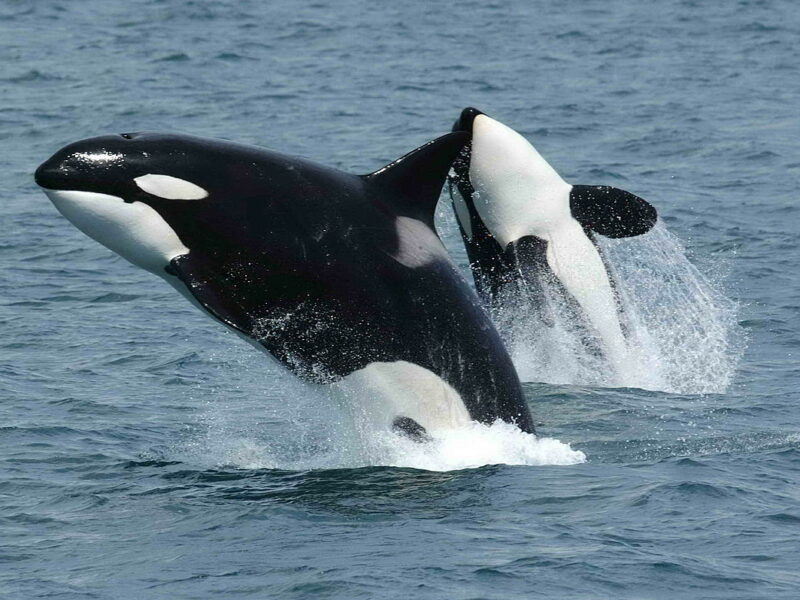
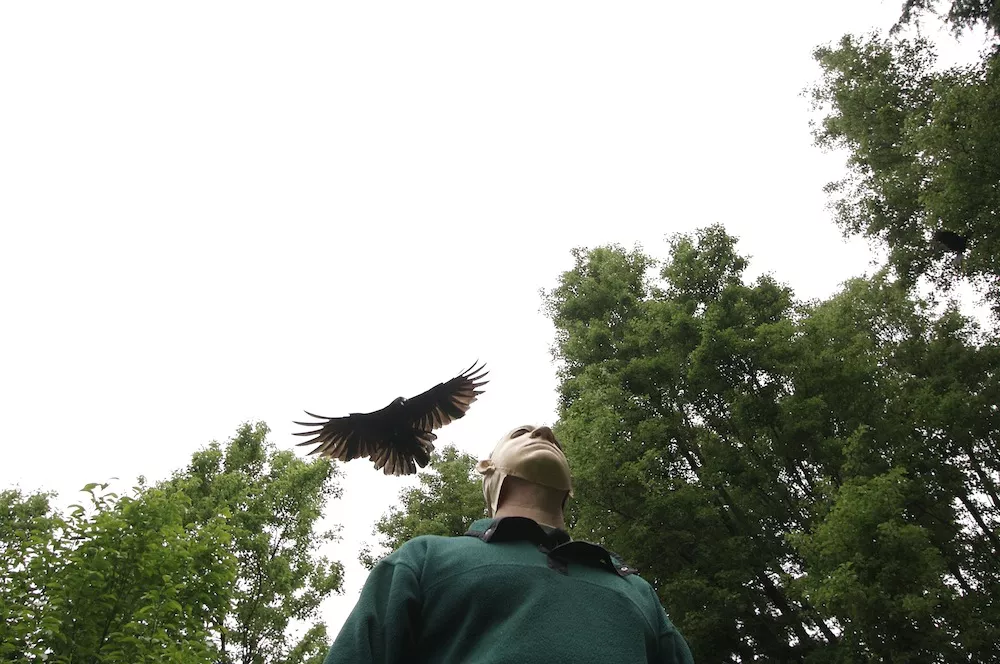


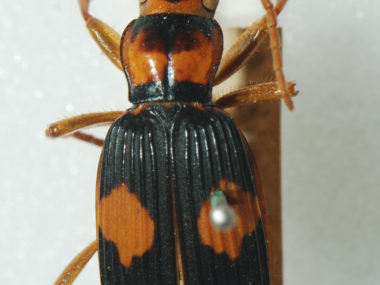
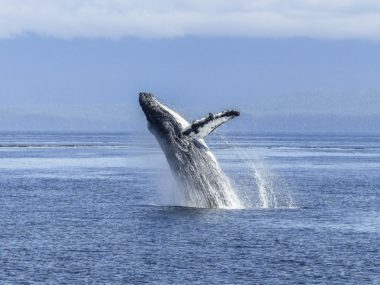
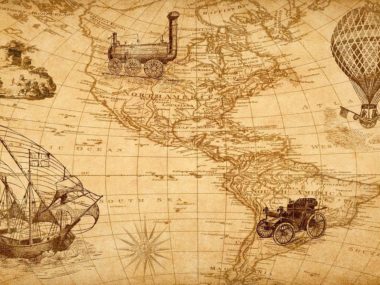
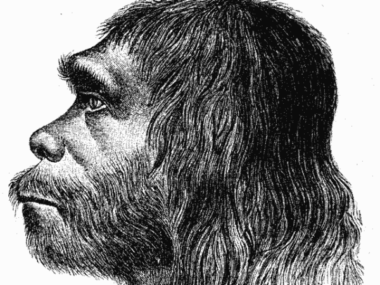




Interesting. The command to love God and others was not given to animals and they aren’t held accountable for their actions. Animals can have relationships with each other and us, but they aren’t responsible for a choice as we are. I think the difference is not in communication or in general relationship, that only promotes survival, but a relationship that requires a choice, to either love God and others, or to hate, either by indifference, or deliberate action.